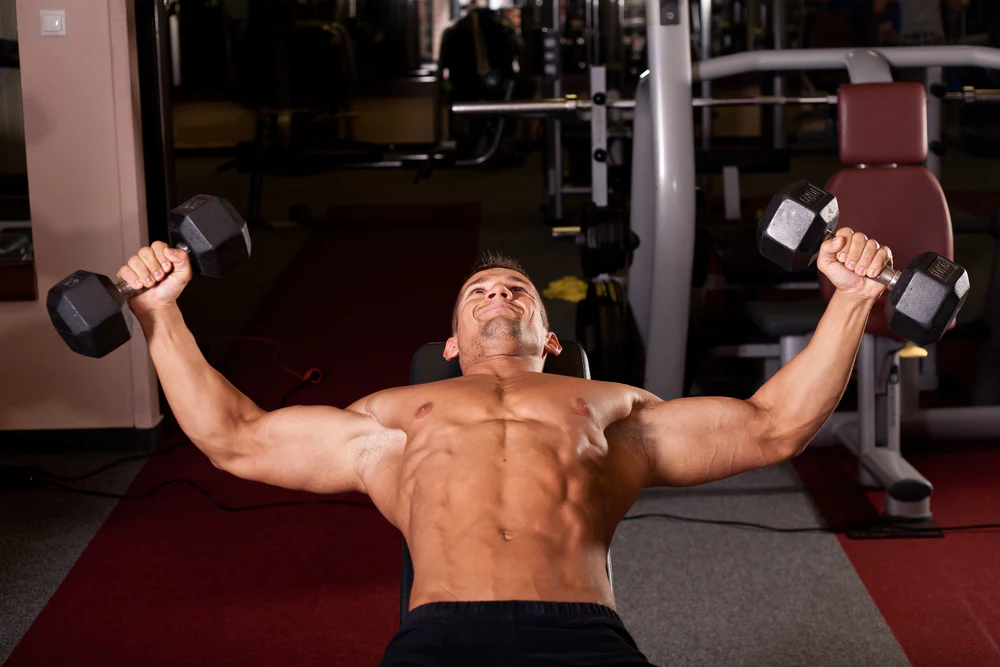
Introduction:
Embarking on a fitness journey often leads us to the desire for a well-defined and muscular upper body. The chest, being a focal point of this aspiration, can be effectively targeted through compound chest exercises. In this comprehensive guide, we’ll explore the benefits, techniques, and variations of compound chest exercises, providing you with the knowledge needed to sculpt a robust and well-proportioned chest.
Understanding Compound Chest Exercises:
Compound chest exercises are multi-joint movements that engage multiple muscle groups simultaneously. These exercises not only target the pectoral muscles but also recruit supporting muscles like the triceps, shoulders, and even the core. The integration of these muscle groups not only enhances overall strength but also promotes functional fitness, making compound chest exercises a fundamental component of any well-rounded workout routine.
Bench Press: The Foundation of Chest Workouts:
The bench press stands as the cornerstone of compound chest exercises. It primarily targets the pectoralis major but also engages the anterior deltoids and triceps. Performing a bench press involves lying on a flat bench, gripping a barbell, and lowering it to your chest before pressing it back up. Variations such as the incline and decline bench press can be incorporated to emphasize different areas of the chest.
Technique Tips:
- Maintain a stable shoulder position by retracting and depressing your scapula.
- Keep your feet planted firmly on the ground to provide a stable base.
- Ensure a controlled descent of the barbell to maximize muscle engagement.
Push-Ups: A Versatile Bodyweight Classic:
Push-ups are a versatile compound exercise that requires no equipment and can be performed anywhere. This exercise primarily targets the chest, shoulders, and triceps while also engaging the core muscles. Variations like wide-grip push-ups, diamond push-ups, and decline push-ups allow you to adjust the focus on different areas of the chest.
Technique Tips:
- Maintain a straight line from head to heels throughout the movement.
- Elbows should be at a 45-degree angle to the body to protect the shoulders.
- Focus on a controlled descent and explosive push back to the starting position.
Dumbbell Press: Unilateral Strength Building:
Dumbbell presses, whether flat, incline, or decline, offer a unilateral approach to chest training. By using dumbbells, each side of the chest works independently, helping to address muscle imbalances. This exercise engages the pectoral muscles, deltoids, and triceps, offering a dynamic range of motion that can be adapted to individual fitness levels.
Technique Tips:
- Keep your core engaged to stabilize the spine.
- Control the movement, ensuring both dumbbells move symmetrically.
- Use a full range of motion to maximize muscle activation.
Chest Dips: Targeting the Lower Chest:
Chest dips are an effective compound exercise that targets the lower portion of the chest. This bodyweight exercise requires parallel bars or dip stations. As you lower your body, the chest muscles are engaged, along with the triceps and anterior deltoids.
Technique Tips:
- Lean slightly forward to emphasize chest engagement.
- Keep your elbows pointed slightly outward to alleviate stress on the shoulders.
- Control both the descent and ascent phases of the movement.
Benefits of Incorporating Compound Chest Exercise
Efficient Use of Time:
Compound chest exercises maximize efficiency by working multiple muscle groups in a single movement. This allows you to achieve a comprehensive workout in less time compared to isolating individual muscles.
Functional Strength:
The integration of various muscle groups in compound exercises mirrors real-life movements, promoting functional strength. This not only enhances your ability to perform daily activities but also contributes to athletic performance.
Hormonal Response:
Compound exercises, including compound chest exercises, elicit a greater hormonal response. The release of hormones such as testosterone and growth hormone during compound movements supports muscle growth and overall fitness.
Balanced Muscle Development:
Targeting the chest with compound exercises ensures a balanced development of the entire pectoral region. This approach helps prevent muscle imbalances that can occur with a focus on isolation exercises alone.
Variations and Progressions
Incline and Decline Bench Press:
Altering the angle of the bench during the bench press shifts the emphasis to different parts of the chest. Incline bench press targets the upper chest, while decline bench press focuses on the lower chest. Including these variations in your routine adds diversity and ensures comprehensive chest development.
Explosive Push-Ups:
Incorporating explosive or plyometric push-ups enhances power and explosiveness. This variation involves pushing off the ground with enough force to lift your hands off momentarily. It not only engages the chest muscles but also improves overall athletic performance.
Single-Arm Dumbbell Press:
Progressing to a single-arm dumbbell press further challenges stability and addresses any muscle imbalances between the left and right sides. This variation demands increased core engagement for balance and coordination.
Weighted Chest Dips:
Introducing additional weight to chest dips allows for progressive overload, promoting muscle growth and strength. Ensure a gradual increase in weight to maintain proper form and reduce the risk of injury.
Common Mistakes to Avoid
Overlooking Proper Form:
Incorrect form during compound chest exercises can lead to injuries and hinder progress. Prioritize maintaining proper technique over lifting heavy weights.
Neglecting Warm-Up:
A thorough warm-up is crucial before engaging in compound chest exercises to prepare the muscles and joints. Neglecting this step may increase the risk of strains or injuries.
Ignoring Muscle Imbalances:
Focusing solely on compound movements without addressing muscle imbalances may lead to uneven development. Incorporate unilateral exercises or additional sets for weaker areas to achieve a balanced physique.
Neglecting Recovery:
Adequate rest and recovery are essential for muscle growth. Overtraining can hinder progress and increase the risk of injury. Ensure a balanced workout routine with rest days to allow for optimal recovery.
Incorporating Compound Chest Exercises into Your Routine:
Creating a well-rounded chest workout involves strategic planning and the incorporation of various compound exercises. Consider the following sample workout to target different areas of the chest and promote overall muscle development:
- Bench Press:
- 4 sets x 8-10 reps
- Incline Dumbbell Press:
- 3 sets x 10-12 reps
- Weighted Chest Dips:
- 3 sets x 12-15 reps
- Explosive Push-Ups:
- 3 sets x 10-12 reps
- Single-Arm Dumbbell Press:
- 3 sets x 10 reps per arm
Remember to adjust the weights and repetitions based on your fitness level and goals. Additionally, listen to your body and incorporate adequate rest between sets to optimize performance and prevent fatigue-related injuries.
Conclusion:
Mastering compound chest exercises is key to achieving a sculpted and powerful upper body. The incorporation of bench presses, push-ups, dumbbell presses, and chest dips into your workout routine provides a comprehensive approach to chest training. By understanding the benefits, techniques, and variations of these compound exercises, you can tailor your workouts to meet your specific fitness goals. Whether you’re a novice or a seasoned fitness enthusiast, the versatility of compound chest exercises ensures a challenging and rewarding journey towards a well-defined and muscular chest.


